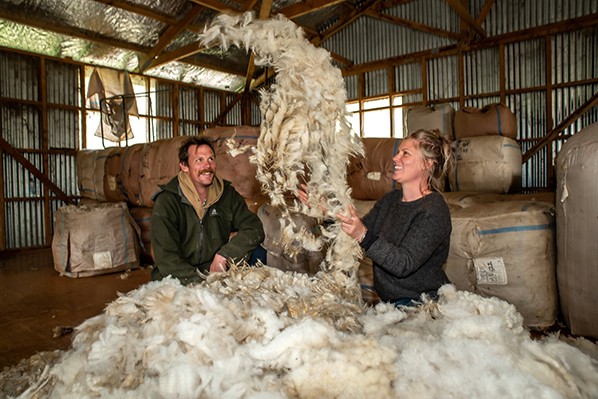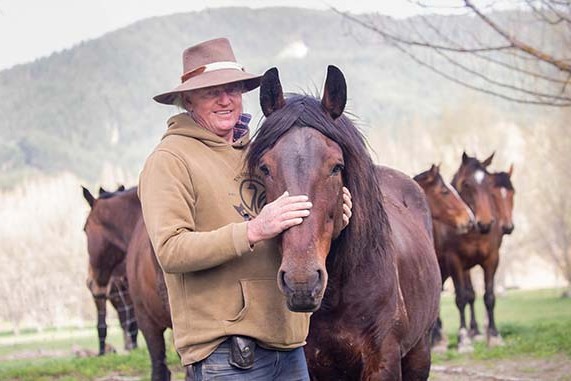Working dogs are best mates to many farmers, indispensable to all, Gerard Hutching writes.
Recent decades have seen a sea change in attitudes to caring for what Marlborough vet Stuart Burrough describes as “amazing animals and elite athletes”.
Where once farmers might have fed their dogs throwaway lamb offcuts, and left them in kennels at the mercy of the elements, a rising tide of awareness is setting new standards for their care.
Practice manager at Atkinson and Associates in the northern King Country town of Piopio, Cathryn Christie, confirms a shift in attitude from her observations over the last 10 years.
“It wasn’t uncommon 10 years ago to see very thin farm dogs that were not regularly wormed, they weren’t fed enough and it was poor quality food sometimes. They got injured regularly and didn’t last very long. There are still dogs like that out there but they’re the exception to the rule when you see them these days.”
A dog’s working lifespan varies, depending on the terrain. On steep hill country five to seven years is maximum, after which it might be sold to someone with an easier farm. Christie knows a number of nine-year-olds still working and are valuable parts of the team.
Financial self-interest is one of the chief drivers of the transformation.
Central Otago station manager Chris McDonald points out a well-trained dog can be worth anything between $8-$10,000 and therefore any measures that extend the working life of their second most valuable asset (after a vehicle) are welcome.
McDonald has six dogs for the Patearoa 20,000 stock unit farm, and he treats them like part of the family.
He says most farmers are caring, some appreciate them more than others.
“It depends on your upbringing, if you come from an environment where people treat their dogs well, so will you.”
He says some dogs get a good pat during the day at some stage. Some people hardly pat a dog at all, it’s just a tool to them.
“For my own situation, care hasn’t changed a lot, I’ve always kept them well housed and well fed.”
McDonald says some farmers buy a dog and trade them, others will have them from pups to when they die. In the past a dog might get old and it would be put down but now a lot of people value what the dog has done within their lifetime.
“They treat them to a damn good retirement – which they should get.”
A typical day starts with giving the dogs a run before loading them on to the dog box on the ute and heading off to work. In spring, lambing is the most important job and for that he uses only the three heading dogs rather than the boisterous huntaways which come into their own herding sheep in the yards.
Sophisticated care
Central Otago station owner Chris McDonald sees vets as being at the forefront of dog health and wellbeing.
He says care has become more sophisticated. Equally, farmers are more prepared to spend a lot of money to rehab a dog if it is injured.
Two vet practices – The Vet Centre in Marlborough and Vet Service Hawke’s Bay – are helping to spearhead the newly launched Wallago Dogs programme. It is the brainchild of Elanco technical vet Kirstie Inglis. She is also an animal wellbeing representative for the company. The aim of the initiative is to improve the services that vet clinics offer to farm dog clients.
Inglis’ interest in New Zealand farm dogs was sparked 15 years ago when she migrated from the United Kingdom.
“Already animal health was a pet passion, and then I met these cool breeds – the huntaways and the heading dogs – and got to know about the station life.
“It just blew me away, how important the bond was between those working dogs and farmers out on those remote stations all day.”
Working in a vet practice, she and colleagues used to do annual dog runs where within a three-day time period they would vaccinate as many as possible. She laments they did not get enough time to properly examine the dogs but notes that has changed to an extent, with some practices doing a good job of giving dogs the health care they deserve.
She says if a vet practice sends out a dog animal expert rather than the farm vet who normally doesn’t do dogs, and they do a nose-to-tail exam like one for a pet dog, they can pick up and foresee health problems a lot better. “Better than doing the frantic ‘let’s cram all the dogs into three days a year in the area’,” Kirstie says.
With that in mind, in concert with Stuart Burrough of the Vet Centre in Marlborough and Caroline Robertson of Vet Service Hawke’s Bay, she has developed sets of resources practices can use.
Burrough and Robertson describe it as a process of sharing their intellectual property. In their own way they have been doing Wallago dogs for several decades but they never gave it a formal name.
Robertson says the first impetus used to be vaccinating dogs and trying to get herd immunity, but that has expanded out to improving overall animal health.
This is trying to give people an easy way of starting a process. When faced with something new, the hardest thing is to get started.
“We’re giving them a push, it’s a good thing for business, clients and the animals,” she says.
Burrough says the resources are aimed at practices which have not yet developed a working dog health programme, and to give them the tools and confidence to get started. He likens a thorough clinical examination to an annual warrant of fitness check for the car – it will pick up preventable problems.
Another year’s working life
“It’s better for farmers if they can get another year’s working life out of their dogs by dealing with problems before they develop, but also has benefits for the practice which earns income from follow up procedures that were identified. It’s a win:win.”
Atkinson and Associates’ Cathryn Christie says the new frontiers of dog care lie in drugs, nutrition and kennel care.
There is an increasing use of anti-inflammatory drugs to ward off stiffness. Where in the past farmers used to wait until arthritis slowed dogs down, now they are being more proactive by putting them on anti-inflammatory drugs.
“It might just be given as a pulse therapy – perhaps when they’ve got a big day to get them through – or as they get older it might be a more constant course. There’s one product (Trocoxil) which you can give once a month and that’s been a game changer for working dogs because farmers aren’t always compliant at dosing daily.”
Big strides have been made in nutrition. Dogs used to be fed mutton no matter the quality, but one of the upsides of the better prices farmers are being paid for livestock is that the practice has largely stopped – “a godsend for nutrition”, Robertson says.
In comparing dogs to elite athletes, Burroughs says the All Blacks would not try and perform on “rubbish”, whereas diets of high levels of protein and fat not only give them more stamina but stronger bones.
Specialty dry food diets do not come cheap. For example the Royal Canin mobility diet costs almost $200 for 15kg but farmers will feed their good older dogs on the nuts instead of dosing them.
Burroughs says the old dog can keep going till the younger one is ready.
Only in its infancy, the Wallago programme is hosted on a website vetsafe.co.nz.




